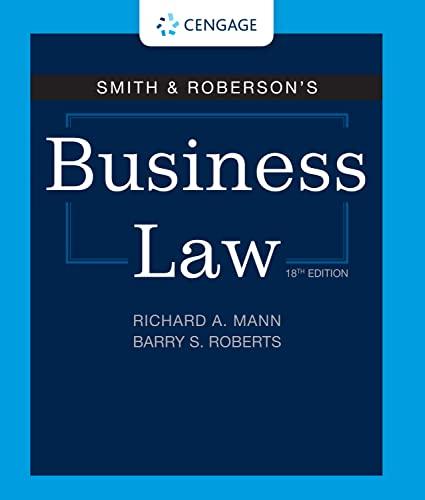Answered step by step
Verified Expert Solution
Question
1 Approved Answer
Case Summary of Stambovsky v. Ackley: Plaintiff Stambovsky sued to rescind a real estate contract when he learned that the house was supposedly haunted, impacting
Case Summary of Stambovsky v. Ackley: Plaintiff Stambovsky sued to rescind a real estate contract when he learned that the house was supposedly haunted, impacting its value. The trial court dismissed the action, finding no remedy at law. The appeals court modified the judgment. It held that even though there is no remedy at law, there is a remedy in equity. Buyer should be allowed to rescind the contract and recover his deposit because there was no reasonable way of discovering what seller knew and did not disclose that the house was supposedly haunted. Stambovsky v. Ackley Case Brief Statement of the Facts: Plaintiff Stambovsky entered into a contract to buy Defendant Ackley's house, located in Nyack, NY. Between execution of the contract and closing, Stambovsky learned that the house had a reputation for being haunted. Being from New York City, Stambovsky was not aware of the local folklore about the house being haunted. However, Ackley took steps to foster that reputation, having reported about seeing apparitions in the house in a national publication (Reader's Digest) and a local newspaper. Upon learning that the house was supposedly haunted, which would negatively impact its value, Stambovsky sued to rescind the contract and recover his $32,000 deposit. Procedural History: The trial court dismissed Stambovsky's complaint, finding no remedy at law. Stambovsky then appealed to the Appellate Division of New York Supreme Court. Issue and Holding: Can a buyer of real estate rescind the real estate contract based on the undisclosed fact that the house is purported to be haunted? Yes. Judgment: The decision of the trial court is modified, reinstating the claim for rescission. Rule of Law or Legal Principle Applied: Where a seller creates a condition that materially impacts the value of the contract and that condition is known by the seller but unlikely to be discovered by a buyer exercising due care, the seller's nondisclosure constitutes a basis for rescission as a matter of equity. Reasoning: As a threshold matter, the seller represented to the public that the house was haunted and is now estopped from claiming it is not. With regard to Stambovsky's claim of fraudulent misrepresentation, the rule of caveat emptor typically applies to real estate dealings. As such, the seller, or the seller's agent, cannot be held liable at law for fraud by staying silent about the house's local reputation for being haunted. That said, there is relief in equity in this case. Stambovsky is allowed to rescind the contract and recover his deposit. Even the most meticulous inspection of the house would not reveal ghosts in the house or the house's reputation in the community. Accordingly, it would be unfair to give the seller an advantage over the buyer for a material fact that the buyer could never reasonably discover. That is particularly true where, as here, the seller created the material fact by encouraging the reputation that the house is haunted. Dissenting Opinion (Smith): Mere silence by the seller of real estate, without deception, is not actionable as fraud in New York State. There was no fiduciary duty between the parties, and thus no duty to disclose. In this arms-length transaction, the buyer has the responsibility to understand the quality of his bargain under the notion of caveat emptor. Who are the plantiff and defendants, and what is the legal relationship between them? 2. What is the dispute between the parties, and what relief does the plantifd seek? 3. How does newyork law apply the doctrine caveat emptor to real estate transactions? 4. What does a bayer have to do, under caveat emptor, before seeking rescession of real contract? 5.how does the court distinguish teh instant case from prior case law dealing with the seller's deauty to disclose information to a buyer? In whose favor does the court ultimately rule
Step by Step Solution
There are 3 Steps involved in it
Step: 1

Get Instant Access to Expert-Tailored Solutions
See step-by-step solutions with expert insights and AI powered tools for academic success
Step: 2

Step: 3

Ace Your Homework with AI
Get the answers you need in no time with our AI-driven, step-by-step assistance
Get Started


